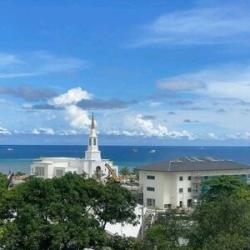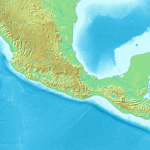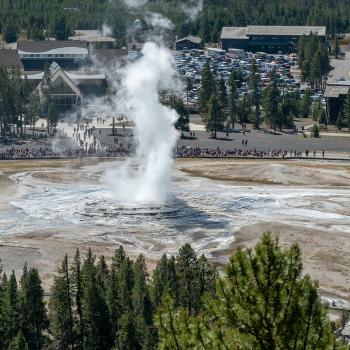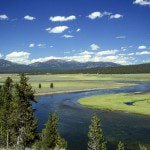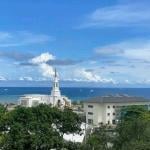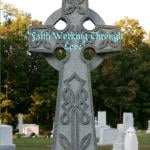
(Wikimedia CC public domain)
While we were in the neighborhood of Central, Utah – which isn’t in central Utah but, rather, in southwestern Utah, about 35 or 40 miles from St. George – we took the opportunity to visit the site of the infamous 1857 Mountain Meadows Massacre. It is much more developed since the last time I was there, which was, I quickly realized, further back in the past than I had thought.
This is the place where, in September of that year, 1857, a group of Mormon militiamen (I can’t bring myself to use the term Latter-day Saint for them in this context) murdered more than 150 members of a passing non-Mormon wagon train. They may have had the help of some Paiutes, but the blame can’t be shifted.
It is, I think, by a considerable distance the most horrible and negative thing in the history of the Church of Jesus Christ of Latter-day Saints.
That said, though, I do not think that the Church, as such, is really connected with it. Nor do I think that it was essentially a matter of religion. Let me clarify that: Some have tried to portray the Mountain Meadows Massacre as an expression of religious zeal and fanaticism. However, in my judgment, that is to misread it. It was an expression of fear. It was connected with religion in the sense that those Mormon militiamen, some of whom had experienced religious persecution and being driven from state to state, all of whom knew about the persecutions in New York and Ohio and Missouri and Illinois, feared for their homes and their families. They were afraid, with a U.S. army already headed for Utah territory to put down a non-existent “Mormon rebellion,” that they were about to be driven from their homes yet again. But where were they supposed to flee? In coming to settle the Great Basin West, they had already left the United States. When would it ever end?
And, so, one horrible decision followed upon another, and one of the most terrible events in the history of the American westward expansion occurred.
Some have sought to blame Brigham Young and senior leaders of the Church for the Massacre. But while, in retrospect, we might wish that some of the rhetoric had been toned down, there is simply no evidence that President Young or any of the apostles ordered the killings, and there is considerable evidence against that claim.
I don’t seek to justify what happened at Mountain Meadows. It was appalling and quite unjustified.
One of the things that fascinates me, however, is its illustration of the fact that even good people can be brought, under the right (wrong) circumstances, to do terrible things. These were not thugs or habitual criminals who carried out the killings. They were pious farmers and pioneers. The Massacre is, therefore, an admonition to us to watch constantly, lest we fall into an analogous trap. Few of us will become involved in mass murder, of course, but we might well be lured by peer pressure, by a boss’s expectations, or whatever to engage in unethical acts, or to join in injustice or unkindness that we would not do on our own. .
I would actually like, someday, to give a sacrament meeting talk or a fireside on the Mountain Meadows Massacre. Not merely or largely to talk about what happened — there are excellent historians for that — but to seek to draw religious and spiritual lessons from it.
When we were there on Wednesday, the weather was beautiful. The place was serene. It was almost exactly the same time of the year on which the Mountain Meadows Massacre occurred. (Most of it, strikingly, happened on 11 September.) It’s a solemn spot. I’m glad that we went.



